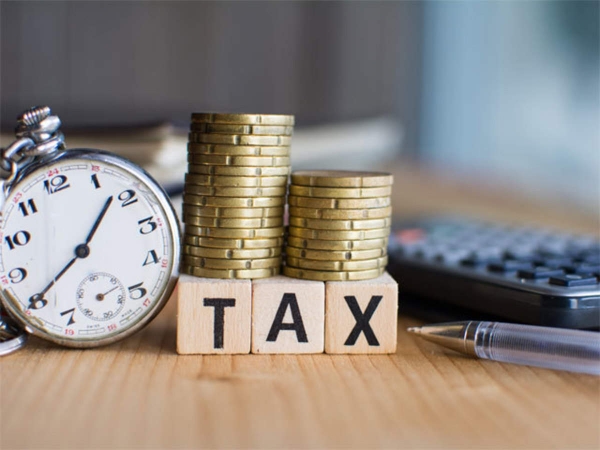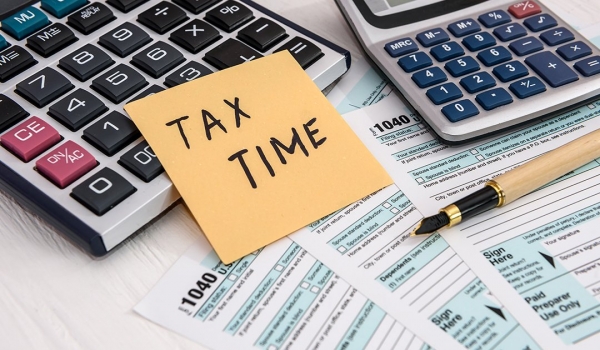Three steps to smoothen your tax planning at the last minute
If you haven't run out of your tax-saving investment yet but are planning to do so now, here's a guide on how to do it. Calculate First, you need to calculate
- by B2B Desk 2021-01-12 08:40:30
Many salaried people end up making their investments to save taxes only after they receive a requirement from employers to provide vouchers or receipts for their investments to save taxes during the fiscal year. Usually, at the start of any fiscal year, usually in April, employers require employees to report a list of investments or tax-saving expenditures that they plan to realize for that year. Then again, near the end of the fiscal year, in December or January, they request coupons or receipts for proposed investments announced earlier in the year.
If you do not provide this evidence, the business owner reduces the TDS in the last three months of the fiscal year, that is, from January to March. This tax can be claimed as a refund upon filing your income tax return if you made the investment before the end of the fiscal year but did not provide proof within the required time frame.
Making last-minute investments to save taxes is not the right thing to do and it is recommended that you do your tax planning at the start of the fiscal year. This will help you avoid stressing your money during the final months of the fiscal year and help you spread out your investments.

If you haven't run out of your tax-saving investment yet but are planning to do so now, here's a guide on how to do it.
Calculate
First, you need to calculate how much you really need to invest. To get there, keep in mind the various discounts for which you are eligible due to some mandatory expenses or investments. For example, under Section 80c, under which you can take advantage of a deduction of up to 1.5 thousand rupees, consider the contribution from the Employee Provident Fund (EPF), the mortgage repayment, and the tuition payment rates for up to two children, from among other things.
Once you have this number, you can invest to cover the shortfall. For example, if your EPF capital and mortgage loan comes to Rs 1.1 lakh, for example, you will have to invest another Rs 40,000 to exhaust the 80C profit.
Otherwise, add any life insurance premiums under Section 80C.

The Right product
Time is short, but do not hurry and make the wrong investment decision. You should essentially analyze tax-saving investment products on four criteria - liquidity or closing, expected return, equity risk, and of course, taxes.
The best tax saving tools have exempt-exempt-exempt tax status the EEE. EEE means that a person gets tax benefits on the investment, on the accrual and at the time of payment. EPF and Public Provident Fund (PPF) both have EEE status. However, both products have a long closing period. EPF is a retirement savings product that only allows early withdrawals under certain conditions, while PPF is subject to closure for 15 years.
Equity Linked Savings Plans (ELSS) are a better liquid option, as they have the lowest lock-in three years. However, returns are market-related and not as guaranteed as EPF and PPF. ELSS can help build wealth in the long run, but it is riskier. Please note that dividends are taxable. Long-term capital gain on investment of more than a year) is around Rs. 1 lakh is taxed at a rate of 10%.
“Equity is designed for long-term goals (ideally if goals are more than five years). However, many choose ELSS mainly because of the three-year lockdown compared to other tax-saving tools where the closure is five years or more. Choose ELSS for your long-term goals. Term and also with the correct distribution of assets between debt and equity. Never invest in ELSS if you are looking for money after three years, "said Basavaraj Tonagatti, Sebi Registered Financial Adviser.
Risk-averse investors can also opt for the tax-efficient fixed deposits, which come with a five-year lock-in. However, the interest rates on these are currently very low. In addition, interest income is fully taxed at a progressive marginal tax rate. If you are in the higher income tax bracket, you may end up with a negative real rate (which takes into account minimal inflation Reducing taxes and total return) by investing in them.
Make a budget
Saving at the last minute has the potential to strain your money, so prepare a tax-related investment budget for these three months. Take into account your expenses, including utilities and your obligations, to assess how much you can afford to invest. Suppose you can save 20,000 rupees every month. Now define how you want to use it and where you want to invest. For example, you can choose to invest Rs 15,000 in ELSS and Rs 5,000 in PPF per month. "If a person chooses ELSS, they can distribute the investments over the three months that start in January," Dhawan said.
However, remember for each payment of ELSS Regular Investment Plans (SIPs), the lock-in period of three years is independent and commences from the date the SIP is debited from your account. So, if you invest in February 2021, the lock will expire in February 2024, while for the March 2021 share, the lock will expire in March 2024.
Investments to save taxes must be made according to your financial goals, so choosing the right tool is very important. Also, next time, be sure to plan ahead to avoid the last-minute financial burden.
Also Read: New rules for renewal of international driving licence while travelling abroad

POPULAR POSTS
Loan EMIs to Drop as RBI Slashes Repo Rate - Full MPC December 2025 Highlights
by Shan, 2025-12-05 11:49:44
Zoho Mail vs Gmail (2025): Which Email Platform Is Best for Businesses, Startups, and Students?
by Shan, 2025-10-09 12:17:26
PM Modi Launches GST Bachat Utsav: Lower Taxes, More Savings for Every Indian Household
by Shan, 2025-09-24 12:20:59
$100K H-1B Visa Fee Explained: Trump’s New Rule, Clarifications & Impact on Indian Tech Workers
by Shan, 2025-09-22 10:11:03
India-US Trade Deal Soon? Chief US Negotiator Arrives in Delhi as Talks Set to Begin Tomorrow
by Shan, 2025-09-15 11:54:28
Modi Meets Xi: Trump’s Tariffs, Strategic Autonomy, and the Future of Asia’s Power Balance
by Shan, 2025-09-03 06:40:06
Google Claims Gemini AI Uses Just ‘Five Drops of Water’ Per Prompt, Sparks Debate
by Shan, 2025-08-22 12:34:27
RECENTLY PUBLISHED

Pine Labs IPO 2025: Listing Date, Grey Market Premium, and Expert Outlook
- by Shan, 2025-11-05 09:57:07

The Agentic Revolution: Why Salesforce Is Betting Its Future on AI Agents
- by Shan, 2025-11-05 10:29:23

Top 10 Insurance Companies in India 2026: Life, Health, and General Insurance Leaders Explained
- by Shan, 2025-10-30 10:06:42

OpenAI Offers ChatGPT Go Free in India: What’s Behind This Big AI Giveaway?
- by Shan, 2025-10-28 12:19:11

Best Silver Investment Platforms for 2025: From CFDs to Digital Vaults Explained
- by Shan, 2025-10-23 12:22:46





 Subscribe now
Subscribe now 